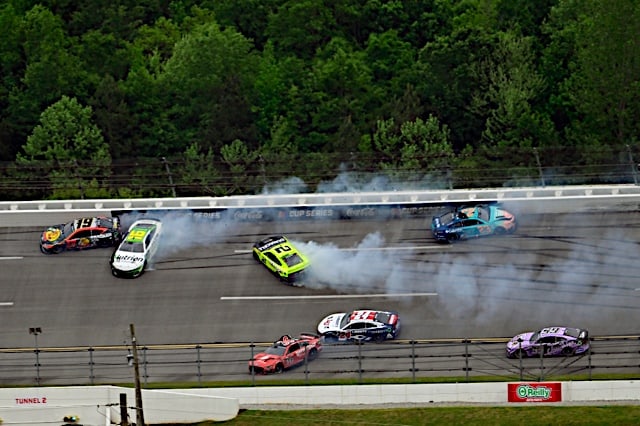Safety changes in NASCAR can happen quickly or slowly. Moving from jeans and t-shirts to fireproof clothing took the death of Fireball Roberts to finally get major adaptation. Window nets happened quickly after Richard Petty was nearly killed at Darlington Raceway while his body hung out the window of a flipping car on the front straight. Five-point harnesses were invented in 1965 but not mandated until 1993.
Head and neck restraints were under development for years, but the death of Dale Earnhardt hastened the implementation of them in the sport in October of 2001. Steel and foam energy reduction barriers were under development at the time of Earnhardt’s death as well, but it wasn’t until 2006 that they were adopted at NASCAR tracks. The Car of Tomorrow came out at that same time with a bigger greenhouse, foam panels and crush zones intentionally designed to reduce forces imparted onto drivers during accidents.
Safety advances have slowed since the “soft walls” were adopted, although small changes continue to happen whenever an accident highlights a need. Unfortunately, with the Gen 7 car introduction last season, it appears as though safety has slid backwards. Before the car was introduced into action, there were numerous crash tests. While nothing was ever publicly released, there were many rumors about the amount of damage imparted onto “drivers” during the tests. The new car is much more rigid than the previous generation car and, at least over the first year and a quarter of use, it has seemed to repeatedly result in drivers being injured.
Kurt Busch has left racing behind due to concussion symptoms suffered from an accident last season. Other drivers have also had concussions, especially during rear impacts with the new car. The composite body and the common parts of the car have reduced the amount of money spent on the cars by the owners, but it seems to have caused an increase in the damage to their drivers.
Sunday’s (April 23) race was just the latest in the list of scary incidents with this latest version of the car. During the “Big One” at Talladega Superspeedway, Kyle Larson’s car turned down and then up across the track. His car ended up crossways directly in front of Ryan Preece, who t-boned the No. 5 of Larson.
In post-incident interviews, both drivers noted that the hit was one of, if not the hardest hits they had ever experienced. That opinion has been repeatedly shared by drivers over the…
Click Here to Read the Full Original Article at …

